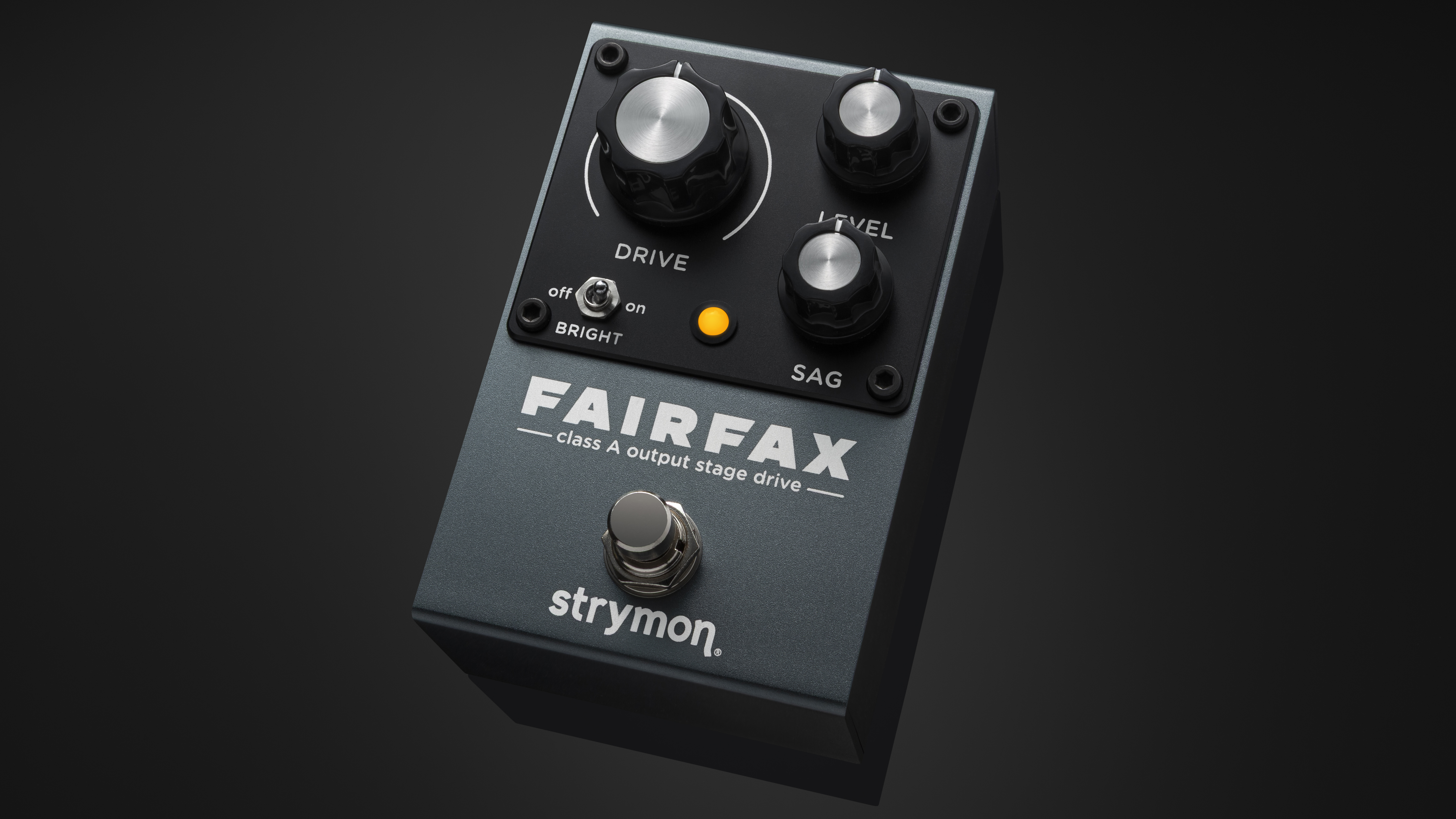The Gibson ES-225 Remains One of the Most Overlooked Golden Era Guitars
This classic design was a major stepping-stone in the storied evolution of thinline electrics.
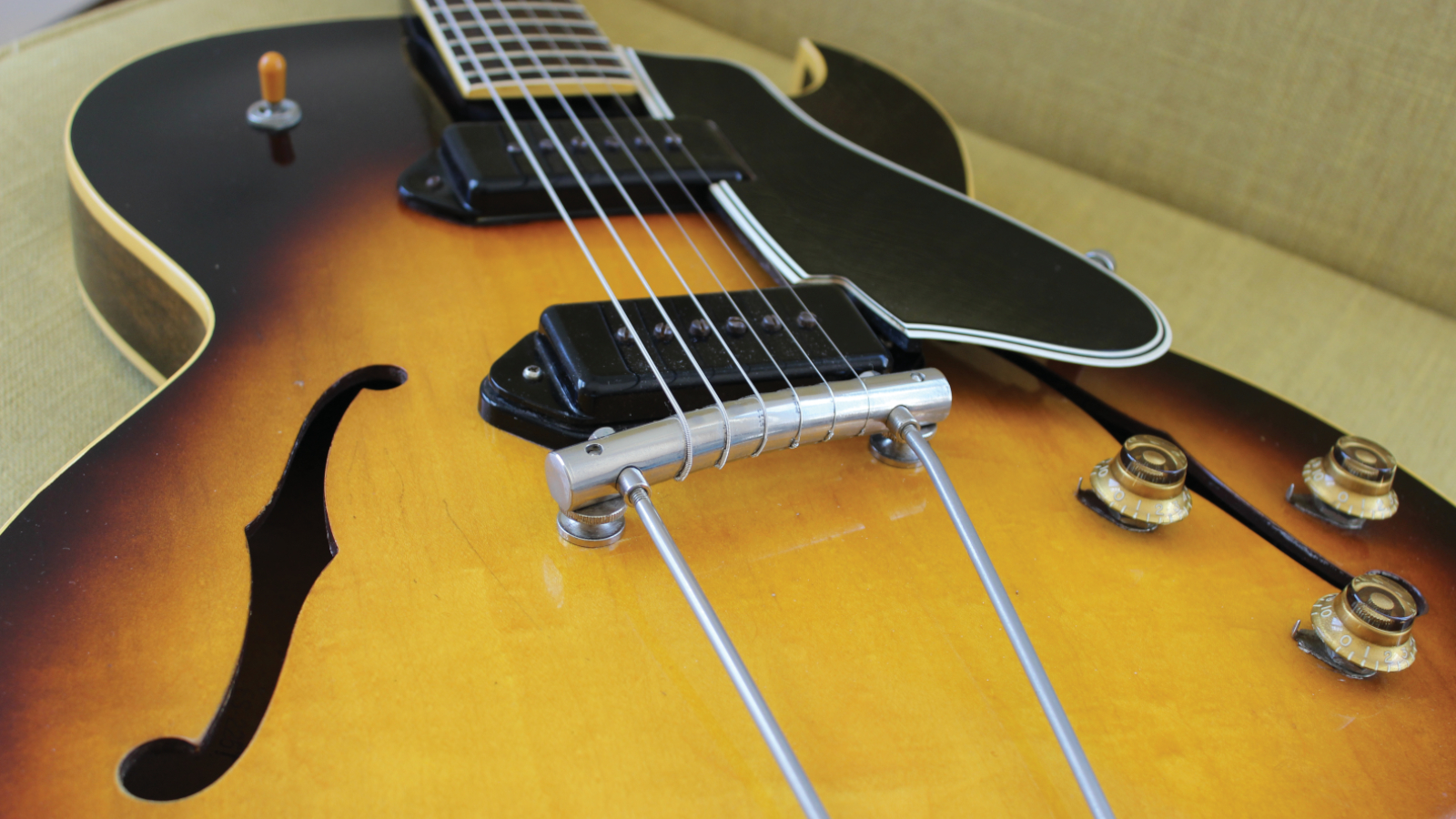
Much has been written about Gibson’s most famous thinline semi-hollow model, the ES-335. Virtually an overnight success upon its release in 1958, it has remained a classic and abiding design ever since, virtually defining the popular marriage between the solidbody and hollowbody electric guitar formats.
Far less discussed, however, is the incremental way Gibson worked up to that shallow-bodied electric built with laminated woods and a solid center block – and the ES-225 of 1955-’59 was a major stepping-stone along the way.
Once the solidbody electric proved more than just a flash in the pan in the early ’50s, Gibson and other makers began scrambling to achieve similar amplified properties in electric guitar models that still retained traditional elements and at least some semblance of archtop-hollowbody tradition.

The ES-175, released three years prior to the Les Paul, had acknowledged the primacy of amplification over acoustics for guitars used in professional jazz, dance band and western swing settings, employing laminated maple in its top, back and sides to help reduce feedback.
This approach would remain one piece of the puzzle, but there were plenty of other innovations waiting in the pipeline.
The ES-225T was released with a single pickup in 1955 as the lower-priced sibling of a trio of debutante thinline guitars from Gibson, which included the more expensive Byrdland and ES-350T.
The following year, it gained a second pickup as the ES-225TD, in Sunburst, and ES-225TDN, in Natural finish.
All the latest guitar news, interviews, lessons, reviews, deals and more, direct to your inbox!
Although the Byrdland, ES-350T and ES-225 can be viewed as a trio of sorts, each was quite different in its specifications.
The Byrdland and ES-350T were made to a shorter, 23 ½-inch scale length, and the former had a top carved from solid spruce, while the latter’s was laminated maple. Both were fully hollow, with body depths of 2 ¼ inches at the rims.
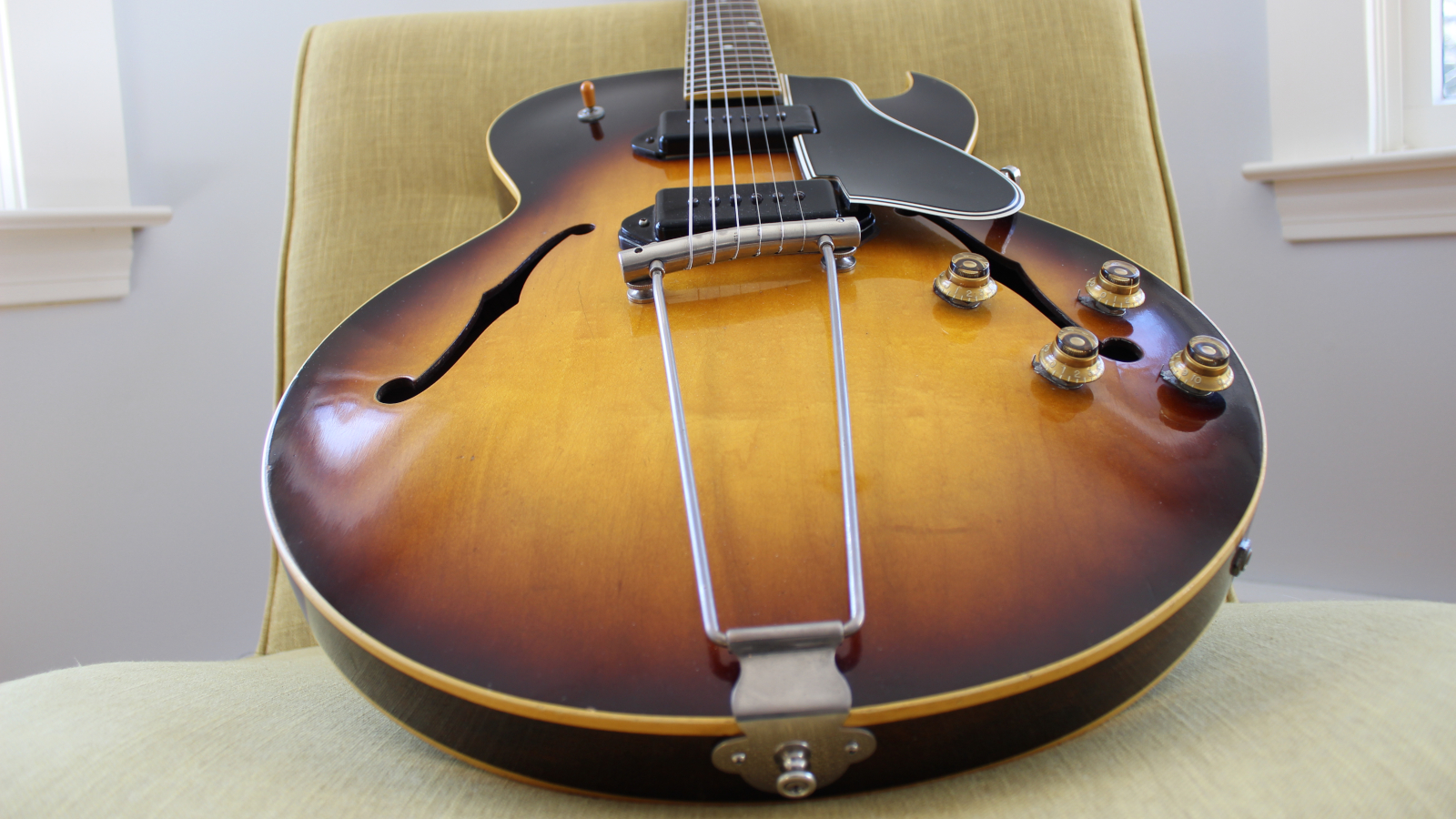
The ES-225, on the other hand, retained the full traditional Gibson scale length of 24¾ inches, yet had a body that was even slimmer at approximately 1 11/16 inches at the rims, making it closer to what we would see in thinline electrics to come.
Its body was also made entirely from laminated maple, but it concealed a nod to a Gibson semi-acoustic breakthrough that was still three years in the future: a solid block of maple in the center of the body, under the bridge.
A feature that many players and collectors apparently remain unaware of today – given the ES-225 is often assumed to be fully hollow, like the lesser ES-125 or the ES-330 – this maple block doesn’t run the full length of the body as it would in the ES-335 family, but still helps to reduce feedback, while yielding a more aggressive attack and sharper articulation.
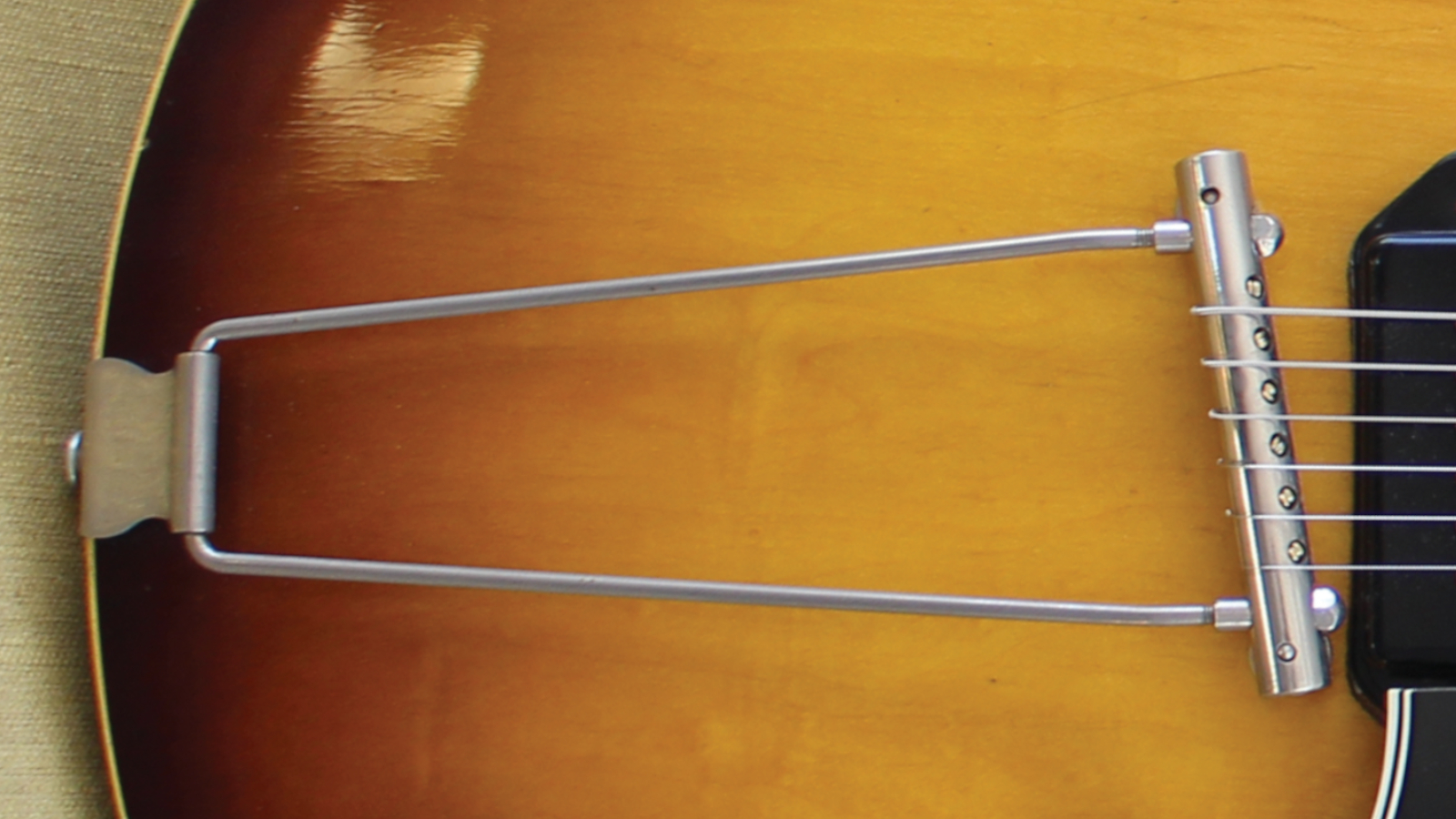
Another distinctive feature found on this model, up until 1958 at least, is the Les Paul–designed, all-in-one trapeze tailpiece with wraparound bridge bar. This piece of hardware is best known for its infamous use in wrap-under style on the first run of Les Pauls in 1952 and early ’53.
Gibson created the first several batches of its first solidbody with a neck angle too shallow to accommodate the wrap-over bar bridge as it was intended. The company was forced to wrap the strings under the unit instead, resulting in an awkward playing feel that also sullied the hardware’s reputation in general.
Released the same year as the first Les Paul, the ES-295 – essentially an ES-175 with a gold paint job and different hardware – carried this trapeze-bridge unit with the strings correctly wrapped over the top of the bar, and it sounds great as a result.
The ES-225 also uses the thing the way it was intended, with impressively solid, clear, rich and sustaining results.

In addition to these particular design and construction points, the ES-225TD is essentially appointed like a semi-hollow Gibson Les Paul Special of the era, with a pair of fat P-90 single-coil pickups and the traditional four-knob control section, with a three-way selector switch on the upper bout.
As a result, what first appears to be a thinline jazz guitar is actually revealed as a surprisingly fierce rock-and-roll machine when injected into the right amp.
The lovely 1957 example featured here presents impressive snap and clarity, good resistance to feedback even with a cranked amp or an overdrive pedal applied (though you can get it there if you want to), and that characteristically beefy P-90 midrange grind, with a little more girth and sizzle from the semihollow laminated-maple construction.
Although Gibson’s necks from the early to mid ’50s have retained a reputation for thick “baseball-bat” profiles, the shape of the one on this ’57 is more like we’d expect from the classic ’59 carve – a comfortably rounded “C” that sits beautifully in the hand and feels ergonomic and sweetly playable all the way up.

The guitar has been refretted to keep it functional, and the original single-line Kluson Deluxe tuners have been replaced with reissues (as so often happens) that have nickel buttons instead of the original white plastic. Otherwise, it’s in clean and entirely original condition.
Gibson shipped 582 ES-225TDs in 1957 and slightly more in each of the two following years, along with only 125 ES-225TDNs in ’57, 223 in ’58 and 171 in ’59. Far more of the single-pickup ES-225T were manufactured throughout its run.
The model was discontinued after 1959, likely because it fell through the cracks between the less expensive ES-125 and the more deluxe ES-330 and ES-335.
In the last two years of its existence, the ES-225 was fitted with a traditional nickel trapeze tailpiece and floating bridge with compensated rosewood saddle piece, which changes the nature of the design in several ways.
As equipped in ’57, though, the ES-225TD and TDN are among the most playable non-jazz-exclusive Gibson electrics from the ’50s to be had today for anything short of five figures, and they’re great vintage-guitar bargains in general as a result…although there just aren’t that many of them out there.
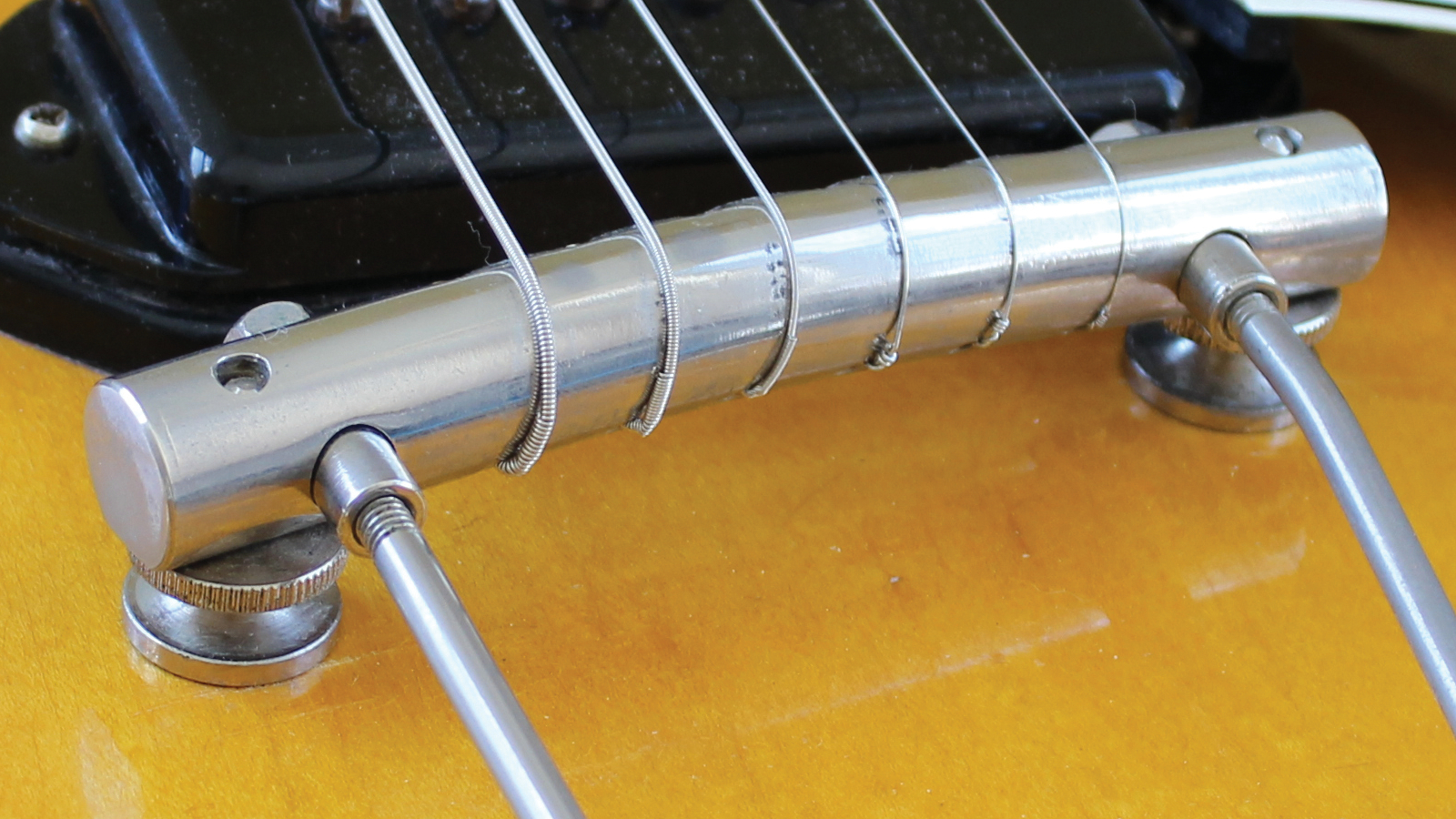
ESSENTIAL INGREDIENTS:
- Single-cutaway thinline body
- Laminated maple body with maple block beneath bridge
- Solid mahogany neck, 24.75” scale length
- Bound Brazilian rosewood fingerboard with dot inlays
- Les Paul-designed integral trapeze/wraparound-bridge
- Two single-coil P-90 pickups
Dave Hunter is a writer and consulting editor for Guitar Player magazine. His prolific output as author includes Fender 75 Years, The Guitar Amp Handbook, The British Amp Invasion, Ultimate Star Guitars, Guitar Effects Pedals, The Guitar Pickup Handbook, The Fender Telecaster and several other titles. Hunter is a former editor of The Guitar Magazine (UK), and a contributor to Vintage Guitar, Premier Guitar, The Connoisseur and other publications. A contributing essayist to the United States Library of Congress National Recording Preservation Board’s Permanent Archive, he lives in Kittery, ME, with his wife and their two children and fronts the bands A Different Engine and The Stereo Field.

